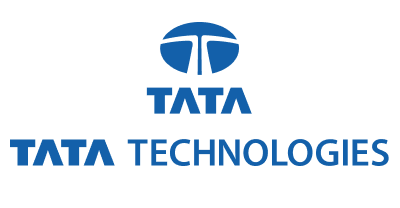In today’s digital age, data has become one of the most valuable assets for businesses across all industries. The sheer volume of information generated daily presents both a challenge and an opportunity. This is where data mining technologies come into play, offering powerful tools to extract meaningful insights from vast datasets. Let’s explore how businesses are leveraging data mining to drive growth, enhance decision-making, and gain a competitive edge.
1. Enhanced Customer Understanding and Personalization
One of the most significant benefits of data mining is its ability to provide deep insights into customer behavior and preferences:
a) Customer Segmentation: Data mining techniques can identify distinct customer groups based on various attributes such as purchasing habits, demographics, and online behavior. This segmentation allows businesses to tailor their marketing strategies and product offerings to specific customer segments.
b) Personalized Recommendations: E-commerce giants like Amazon and Netflix use data mining to analyze user behavior and provide personalized product or content recommendations. This not only enhances the user experience but also drives sales and engagement.
c) Churn Prediction: By analyzing historical data, businesses can identify patterns that indicate when a customer is likely to churn. This allows for proactive retention strategies, potentially saving valuable customer relationships.
2. Improved Decision Making
Data mining empowers businesses to make more informed, data-driven decisions:
a) Market Analysis: By mining market data, businesses can identify trends, assess market potential, and make strategic decisions about product development and market entry.
b) Risk Assessment: In industries like finance and insurance, data mining helps in assessing risks more accurately. This leads to better pricing strategies and reduced exposure to potential losses.
c) Resource Allocation: Data mining can reveal which areas of a business are most profitable or which require additional resources, allowing for more efficient allocation of budget and personnel.
3. Fraud Detection and Security Enhancement
Data mining plays a crucial role in identifying and preventing fraudulent activities:
a) Anomaly Detection: By establishing patterns of normal behavior, data mining algorithms can flag unusual activities that may indicate fraud in financial transactions, insurance claims, or network security breaches.
b) Credit Scoring: Financial institutions use data mining to assess creditworthiness more accurately, reducing the risk of bad loans while also potentially expanding credit access to underserved populations.
c) Cybersecurity: Data mining techniques help in detecting and preventing cyber threats by analyzing network traffic patterns and identifying potential vulnerabilities.
4. Operational Efficiency and Cost Reduction
Businesses can streamline their operations and reduce costs through insights gained from data mining:
a) Supply Chain Optimization: By analyzing historical data and market trends, businesses can optimize their inventory levels, reducing carrying costs while ensuring product availability.
b) Predictive Maintenance: In manufacturing and heavy industries, data mining can predict when equipment is likely to fail, allowing for preventive maintenance and reducing costly downtime.
c) Process Optimization: By analyzing operational data, businesses can identify bottlenecks and inefficiencies in their processes, leading to improved productivity and cost savings.
5. Product Development and Innovation
Data mining can drive innovation and guide product development efforts:
a) Feature Prioritization: By analyzing customer feedback and usage data, businesses can identify which features are most valuable to users, helping to prioritize development efforts.
b) Quality Improvement: In manufacturing, data mining can help identify factors contributing to product defects, leading to improved quality control processes.
c) Trend Forecasting: By analyzing market data and social media trends, businesses can anticipate future consumer preferences and develop products that meet emerging needs.
6. Marketing and Sales Optimization
Data mining significantly enhances marketing and sales strategies:
a) Campaign Optimization: By analyzing the results of past marketing campaigns, businesses can identify the most effective channels, messages, and timing for future campaigns.
b) Cross-selling and Upselling: Data mining can reveal patterns in purchase behavior, allowing businesses to identify opportunities for cross-selling or upselling complementary products.
c) Price Optimization: By analyzing market data, competitor pricing, and customer behavior, businesses can set optimal prices that maximize revenue while remaining competitive.
7. Healthcare and Pharmaceutical Advancements
In the healthcare sector, data mining is driving significant advancements:
a) Disease Prediction and Prevention: By analyzing patient data, genetic information, and environmental factors, data mining can help predict disease outbreaks and identify individuals at high risk for certain conditions.
b) Drug Discovery: Pharmaceutical companies use data mining to analyze molecular structures and biological interactions, potentially accelerating the drug discovery process.
c) Treatment Optimization: By analyzing treatment outcomes across large patient populations, data mining can help identify the most effective treatments for specific conditions.
8. Financial Services and Risk Management
The financial sector heavily relies on data mining for various applications:
a) Algorithmic Trading: Data mining techniques are used to analyze market trends and execute trades automatically based on predefined criteria.
b) Anti-Money Laundering: Banks use data mining to detect suspicious patterns in transactions that may indicate money laundering or other financial crimes.
c) Portfolio Management: Investment firms leverage data mining to optimize portfolio allocations and assess investment risks.
9. Challenges and Considerations
While data mining offers numerous benefits, businesses must also navigate several challenges:
a) Data Privacy and Regulatory Compliance: With regulations like GDPR and CCPA, businesses must ensure their data mining practices comply with privacy laws and ethical standards.
b) Data Quality and Integration: The effectiveness of data mining depends on the quality and completeness of the data. Businesses often face challenges in integrating data from disparate sources and ensuring data accuracy.
c) Skill Gap: There’s a growing demand for professionals skilled in data mining and analytics, creating a talent shortage in many industries.
d) Interpretability: Some advanced data mining techniques, particularly those involving machine learning, can produce results that are difficult to interpret or explain, potentially limiting their applicability in certain contexts.
Conclusion
The benefits of data mining technologies for businesses are vast and multifaceted. From enhancing customer understanding and driving personalization to improving operational efficiency and fostering innovation, data mining has become an indispensable tool in the modern business landscape.
As we move forward, the importance of data mining is only likely to grow. The advent of big data, coupled with advancements in artificial intelligence and machine learning, will continue to expand the possibilities of what can be achieved through data mining.
However, to fully leverage these technologies, businesses must also address the associated challenges. This includes ensuring ethical and compliant data practices, investing in data quality and integration, and developing the necessary skills within their workforce.
Ultimately, the businesses that can effectively harness the power of data mining will be best positioned to thrive in an increasingly data-driven world. By turning raw data into actionable insights, these companies can make smarter decisions, create more value for their customers, and stay ahead in a competitive global marketplace.











